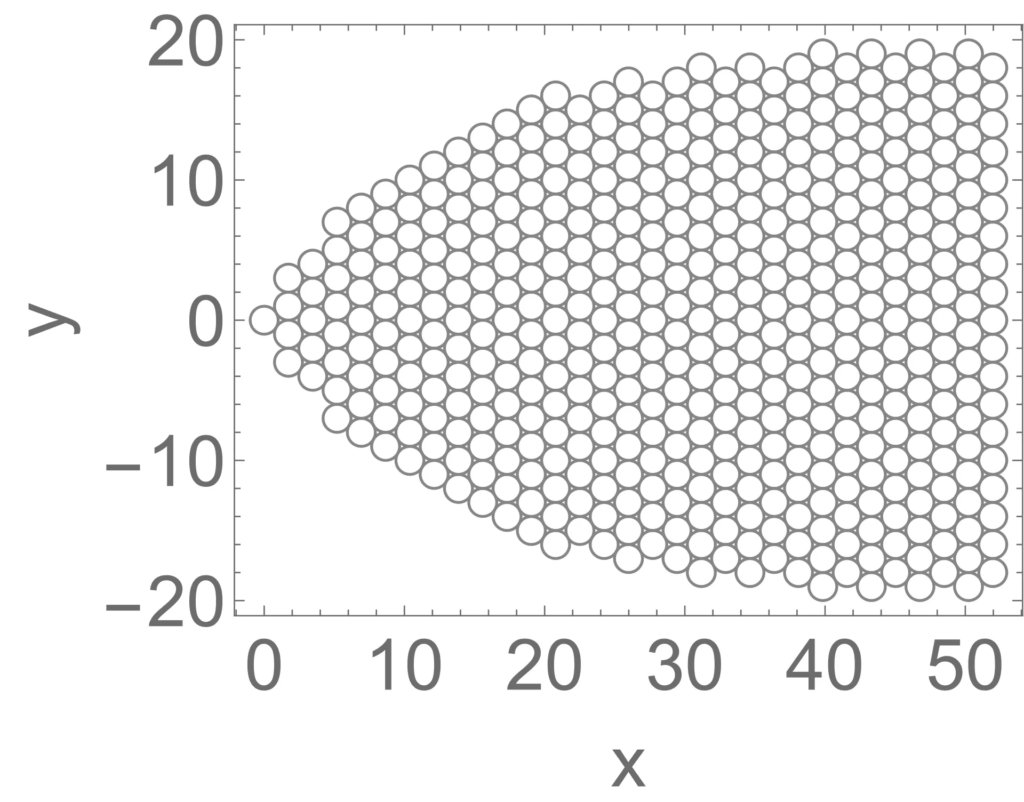The Sense Element Engagement Theory
SEE theory explains how neural interactions give rise to the objective and subjective phenomena of cortical prosthetic vision.
– The experiences reported by implant recipients and coordinated neural quantities are understood to be projections of physical patterns that possess both objective and sensible, subjective aspects. We state that the neurons and interactions between them that give rise to these patterns engage elements of the sensible, subjective aspects just as we state that these neurons and their interactions occupy objective regions of space and occur during objective intervals of time.
– The objective phenomena consist of interactions within a network of neurons that spans columns in primary visual cortex. The subjective phenomena consist of phosphenes (circular or elliptical bright spots) that occupy regions in visual space. These phenomena are modeled as a distribution of lightness intervals on a visual geometry that consists of overlapping visual regions that correspond to the cortical columns. Similarly, the lightness interval distribution consists of sets of subjective lightness values that are related to sets of objective action potential frequencies in a lightness and color system that is distributed throughout the cortical columns.
Interactions mediated by two systems of synapses underlie the visual geometry and lightness interval distribution patterns.
– The strengths of interactions governed by a geometric system of synapses are described by a network-wide mapping from visual distances within and between regions of the visual geometry. Directed interactions between two neurons have strengths which are functionally dependent on visual distances within the region or between the regions that correspond to the column or columns containing these neurons.
– The strengths of interactions mediated by a lightness system of synapses are described by a network-wide mapping from differences in lightness within and between regions of the visual geometry. Interactions between a pair of neurons have strengths which are functionally dependent on differences in lightness within the region or between the regions that correspond to the column or columns containing these neurons.

How the visual geometry and lightness interval distribution patterns emerge:
– Interactions among neurons in the primary visual cortex network increase as the result of excitement delivered by neurons located outside of the network. Above a critical frequency of action potentials in these neurons that are extrinsic to visual cortex, interactions governed by both systems of synapses are present continuously over time throughout the network.
– As continuous interactions emerge, the geometric system synapses engage visual distances within and between geometric regions, the lightness system synapses engage differences in lightness within and between the regions, and the neurons engage the regions.
– In the language of pattern formation, the frequency of excitatory action potentials in these extrinsic neurons is a control parameter.
Simulations of a small-scale neural network consisting of spiking integrate and fire neurons that interact via conductance-based synapses and spanning 25 columns of visual cortex behave in accordance with SEE theory.
– The strengths of interactions governed by a geometric system of synapses are described by a network-wide mapping from visual distances within and between regions of the visual geometry. Directed interactions between two neurons have strengths which are functionally dependent on visual distances within the region or between the regions that correspond to the column or columns containing these neurons.
– Interactions among excitatory neurons located in all columns of the simulation become continuously present as the frequency of extrinsic, excitatory action potentials (i.e., the value of the control parameter) is increased.
– The critical value of the control parameter is approximately 60 action potentials per second both in the absence and in the presence of simulated electrical stimulation of neurons located in one of the simulated columns.
– The proportion of columns containing excitatory neurons that are interacting with neurons in the same and in neighboring columns for which synaptic connections exist rises from 0 % to 100 % in less than 6 milliseconds both in the absence and in the presence of simulated electrical stimulation of one of the simulated columns.
– This behavior of the simulated network occurs while network neurons generate reasonable frequencies of action potentials. For example, when the value of the control parameter is 90 action potentials per second, the frequencies of action potentials generated by excitatory network neurons range from 140/s to 240/s in the presence of simulated electrical stimulation of a column and from 140/s to 220/s in the absence of simulated electrical stimulation. In the case of inhibitory network neurons, the frequencies of action potentials generated by excitatory network neurons range from 0/s to 300/s in the presence of simulated electrical stimulation of a column and from 20/s to 260/s in the absence of simulated electrical stimulation.
